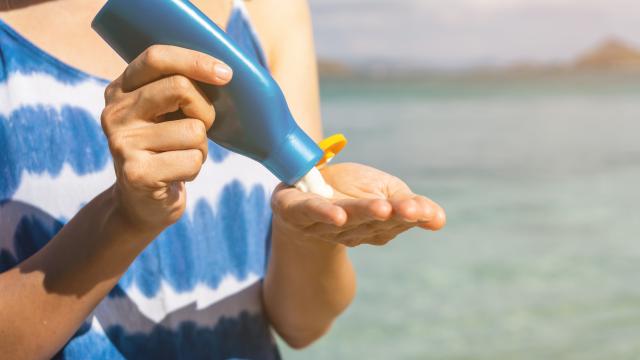In Australia, it’s been (rightly) drilled into us time and time again to always wear sunscreen when we go outside. But does wearing sunscreen have any hidden health impacts?
Are there dangerous chemicals in sunscreen?
Concerns about harmful chemicals in sunscreen have been raised in the past.
The New York Times wrote about a study that the F.D.A conducted into the absorption of para-aminobenzoic acid and trolamine salicylate via sunscreen. At the time the F.D.A recommended sunscreens with these ingredients should not be marked as generally safe to use. But those that use zinc oxide or titanium oxide should be – as these chemicals are not absorbed into the bloodstream.
According to the Australian Cancer Council’s website, studies of sunscreen have shown it to be safe.
There is clear evidence that regular use of sunscreens helps prevent skin cancer. Long-term studies of sunscreen use in Australia have found no harmful effects of regular use. There have been questions raised about the safety of sunscreens that contain nanoparticles. The available evidence suggests that nanoparticles used in sunscreens do not pose a risk to health.
The bottom line is that you should definitely be wearing sunscreen when you go out into the sun.
The environmental impact of sunscreen
Unfortunately, while sunscreen is effective at keeping people safe from the sun, it can have harsh impacts on the environment.
According to National Geographic, 14,000 tons of sunscreen are estimated to be washed into oceans each year, having a harmful impact on coral reefs. The main culprits are oxybenzone and octinoxate, which decrease corals defence against bleaching.
And if you think your sunscreen is safe just because you’re not swimming in the ocean, think again. It’s believed that harmful chemicals from sunscreen can still wash down the drain and into water systems from showering.
Which sunscreen should you use?
The good news is that there are plenty of sunscreen options that will keep both your skin and the reefs safe.
It’s recommended you choose a sunscreen that is free of oxybenzone, nanoparticles and parabens. Avoid aerosol sunscreens where possible as traces of chemicals may still end up on the sand which can wash back into the ocean.
The Cancer Council recommends using TGA approved sunscreen:
Use an SPF30 or higher sunscreen that is broad spectrum, water resistant and TGA approved. As long as your sunscreen meets these requirements, what brand or ingredients you choose is up to you. To check if something is TGA approved, look for the reference to say that the product compiles with AS/NZS 2604:2012.
There are a few local sunscreens to look out for. Sunbutter has worked together with Sea Shepherd to bring an SPF50 sunscreen that is also reef safe. Ocean Australia is another local reef-friendly option.
If you’re looking for a sunscreen that is environmentally friendly down to the bottle, check out the Natural Sunscreen Co. Their new product promises a sunscreen that is made from natural ingredients, is vegan friendly and uses recycled packaging. The project is currently in its Kickstarter phase but is aiming to be manufactured and TGA approved this year.
Now that you’ve picked a new sunscreen, make sure you’re applying enough!

Leave a Reply
You must be logged in to post a comment.